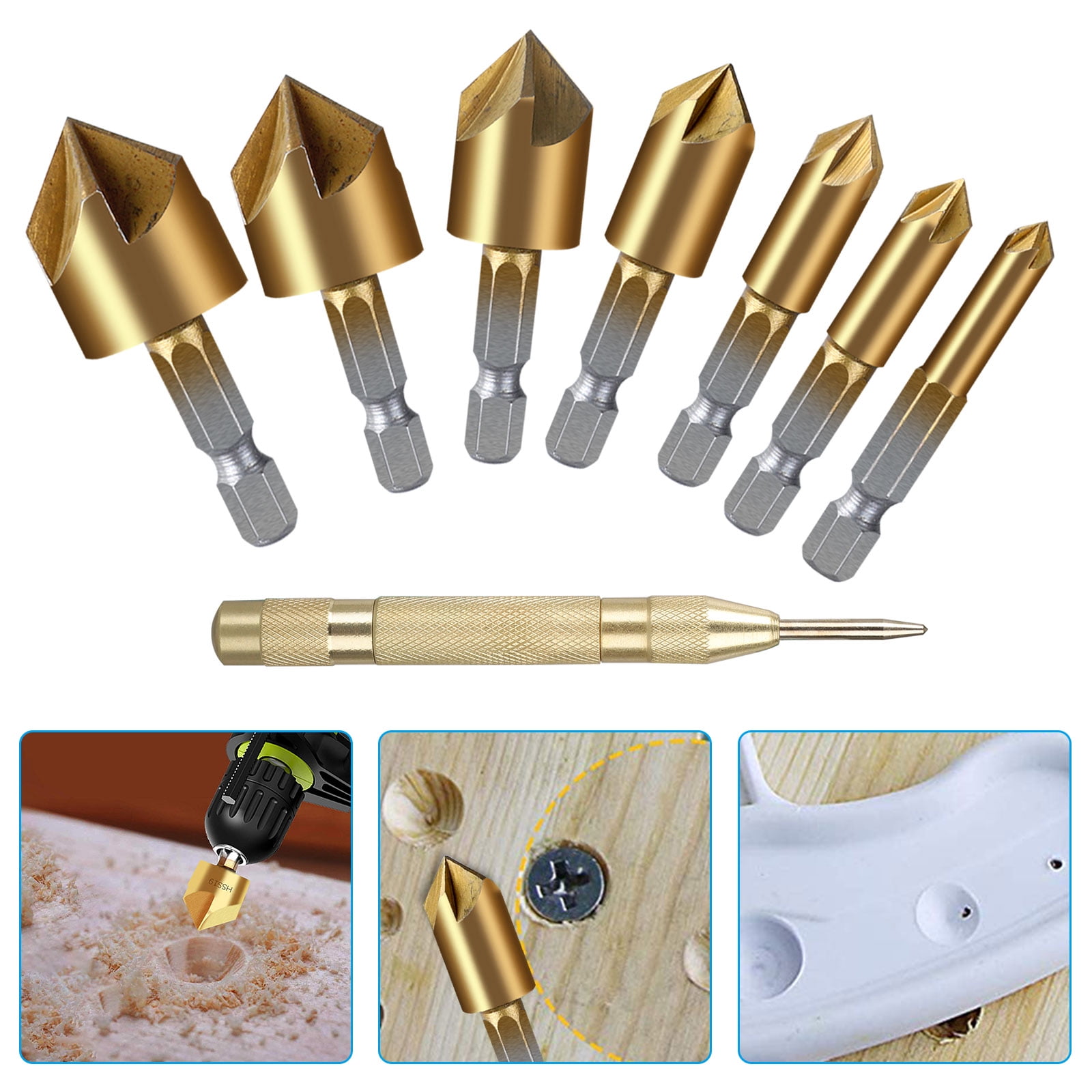

With a variable-speed handheld power drill, the trigger is best squeezed lightly to yield a low spindle speed. On a drill press, the slowest available spindle speed is usually best.

As in many other machining operations, an appropriate response to the chatter may be to decrease speed and increase feed. Too light a feed tends to increase chatter risk. This surface ripple is also dependent on the surface speed of the cutting edges, material type, and applied pressure (or feed rate) once started it is hard to remove. This variation in pitching reduces the chance of the cutting edges setting up a harmonic action and leaving an undulated surface. Better-quality fluted countersink cutters sometimes have the flutes (or at least one flute) at an irregular pitching. As usual in machining, the shorter and more rigid the setup, the better. It can often be difficult to avoid chatter when cutting with countersink cutters. Not only does it obviate the flipping over, cleaning, reclamping, etc., but it also can allow effortless high concentricity, parallelism, and squareness with the first setup's datum without the hassle of reestablishing it on another setup (via painstaking indicating). This reduces setup time and frustration in several ways. The common theme is accomplishing machining operations on the far side of the workpiece from the spindle face, which obviates a "second operation" setup. This is comparable to other types of "back-" machining, such as back-spotfacing, back-boring, back-counterboring, back-milling, and back-deburring. One component is a rod that is inserted into the existing hole in the workpieces the other component is the cutter, which is attached to the rod, or extends out of it, after it is in position. Throughout the aerospace industry, countersunk fasteners typically have an angle of 100°.Ī back countersink, also known as an inserted countersink, is a two piece countersink used on tough to reach areas.
#Countersink drill bit iso#
Countersunk-head screws that follow the Unified Thread Standard very often have an 82° angle, and screws that follow the ISO standard very often have a 90° angle. Countersink cutters are manufactured with six common angles, which are 60°, 82°, 90°, 100°, 110°, or 120°, with the two most common of those being 82° and 90°.

This may be required to allow the correct seating for a countersunk-head screw or to provide the lead in for a second machining operation such as tapping. The fluted countersink cutter is used to provide a heavy chamfer in the entrance to a drilled hole. Side and end view of a 4-fluted countersink Regardless of the name given to the cutter, the surface being generated may be a conical chamfer (plunging applications) or a beveled corner for the intersection of two planes (traversing applications). Therefore, countersinks overlap in form, function, and sometimes name with chamfering endmills ( endmills with angled tips). The basic geometry of a countersink (cutter) inherently can be applied to the plunging applications described above (axial feed only) and also to other milling applications (sideways traversal). A countersink may also be used to remove the burr left from a drilling or tapping operation thereby improving the finish of the product and removing any hazardous sharp edges. A common use is to allow the head of a countersunk bolt, screw or rivet, when placed in the hole, to sit flush with or below the surface of the surrounding material (by comparison, a counterbore makes a flat-bottomed hole that might be used with a socket-head capscrew). Comparison of countersunk and counterbored holes.Ī countersink (symbol: ⌵) is a conical hole cut into a manufactured object, or the cutter used to cut such a hole.


 0 kommentar(er)
0 kommentar(er)
